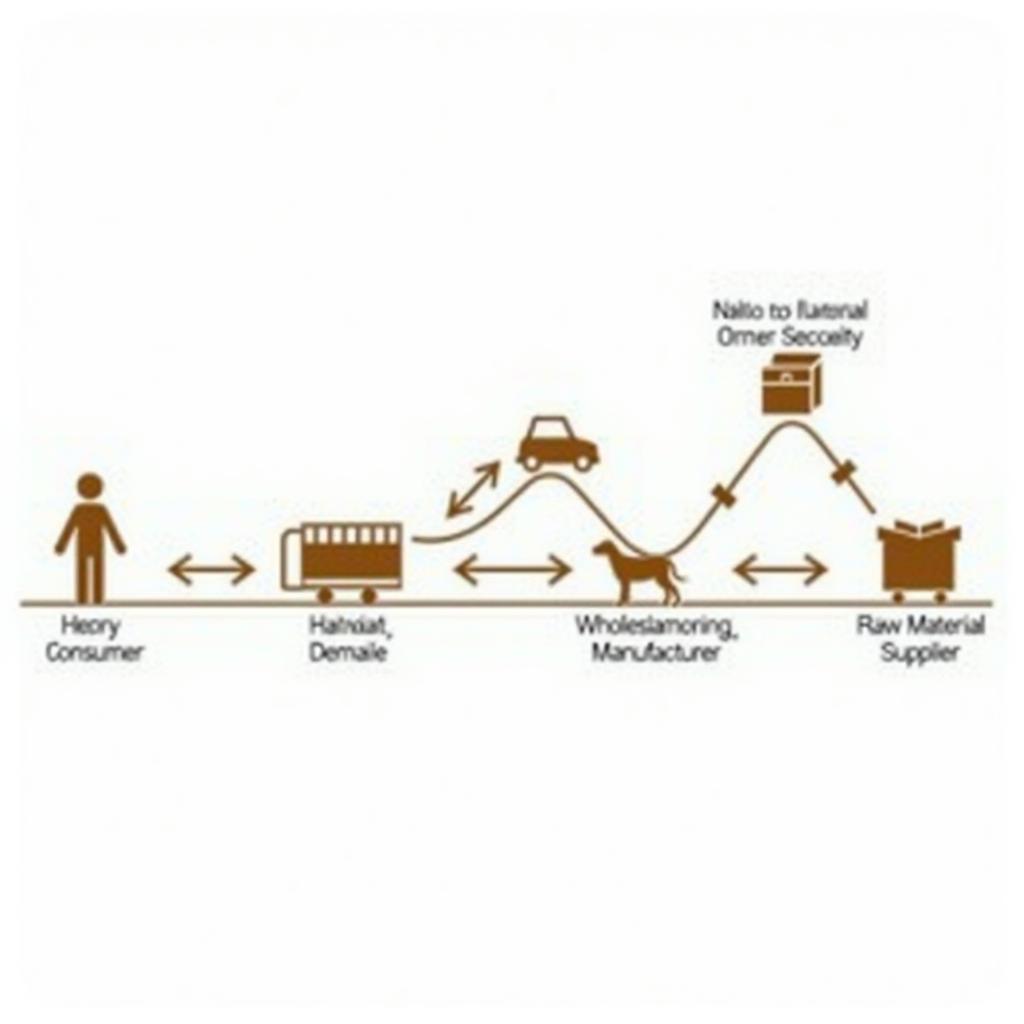Bullwhip Food, a term sparking curiosity and confusion, isn’t about culinary whips or exotic ingredients. It refers to the phenomenon of increasing demand variability as you move up the supply chain, from the end consumer to the raw material supplier. This “whiplash” effect can lead to significant inefficiencies and challenges for businesses across the food industry. Let’s delve into the complexities of the bullwhip effect and understand its impact on food businesses.
What is the Bullwhip Effect in Food?
The bullwhip effect describes how even small fluctuations in consumer demand can create increasingly large swings in demand further up the supply chain. Imagine a slight increase in cracker sales at your local grocery store. The store orders more from the distributor, who in turn orders even more from the manufacturer, anticipating further increases. The manufacturer then orders a large surplus of raw materials, like flour and oil, fearing shortages. If the initial increase in cracker sales was temporary, everyone upstream is left with excess inventory, resulting in wasted resources and lost profits.
Why Does the Bullwhip Effect Occur in Food?
Several factors contribute to the bullwhip effect in the food industry:
- Demand Forecasting Errors: Inaccurate predictions of future demand lead to over-ordering or under-ordering, amplifying the bullwhip effect. Perishable goods further complicate forecasting due to their limited shelf life.
- Order Batching: Grouping orders to reduce costs can create artificial spikes in demand, misleading suppliers about the true consumption rate.
- Price Fluctuations: Promotional discounts and price changes can incentivize stockpiling, leading to distorted demand patterns. Consumers might buy large quantities during a sale, creating a temporary surge in orders.
- Lack of Information Sharing: Poor communication and limited visibility across the supply chain prevent stakeholders from accurately assessing real-time demand.
 Bullwhip Effect Diagram in Food Supply Chain
Bullwhip Effect Diagram in Food Supply Chain
Mitigating the Bullwhip Effect: Strategies for Food Businesses
Successfully navigating the bullwhip effect requires proactive strategies and collaborative efforts across the supply chain.
Improving Demand Forecasting
Implementing advanced forecasting techniques, incorporating real-time data, and analyzing historical trends can lead to more accurate demand predictions. Sharing this information across the supply chain can further enhance accuracy.
Reducing Lead Times
Shorter lead times allow businesses to react more quickly to changes in demand, minimizing the need for large safety stocks. Streamlining logistics and optimizing production processes contribute to reducing lead times.
Enhancing Supply Chain Visibility
Sharing information across the supply chain, from point-of-sale data to inventory levels, enables all stakeholders to have a clear picture of actual demand, reducing uncertainty and preventing overreactions.
 Information Sharing in a Food Supply Chain
Information Sharing in a Food Supply Chain
Building Strong Supplier Relationships
Collaborative partnerships with suppliers foster trust and open communication, facilitating smoother operations and more efficient responses to demand fluctuations. Joint planning and shared forecasting can minimize the impact of the bullwhip effect.
“Building trust and transparency within the supply chain is crucial for mitigating the bullwhip effect. Open communication and data sharing are essential for making informed decisions,” says Dr. Sarah Mitchell, a supply chain expert specializing in the food industry.
The Impact of the Bullwhip Effect on Food Waste
The bullwhip effect can significantly contribute to food waste. Overstocking due to inflated demand forecasts leads to spoilage, particularly for perishable goods. Inefficient logistics and long lead times exacerbate this problem.
Conclusion
Understanding and addressing the bullwhip effect is crucial for any food business aiming for efficiency and profitability. By implementing the strategies outlined above, companies can minimize the impact of demand variability, reduce waste, and improve overall supply chain performance. Effectively managing the bullwhip effect ensures a more resilient and sustainable food system.
FAQ
- What is the bullwhip effect?
- How does the bullwhip effect impact food businesses?
- What are the causes of the bullwhip effect?
- How can the bullwhip effect be mitigated?
- What is the impact of the bullwhip effect on food waste?
- How can technology help in mitigating the bullwhip effect?
- What are some examples of the bullwhip effect in the food industry?
For further assistance, please contact us at Phone Number: 02437655121, Email: minacones@gmail.com Or visit our address: 3PGH+8R9, ĐT70A, thôn Trung, Bắc Từ Liêm, Hà Nội, Việt Nam. We have a 24/7 customer service team.